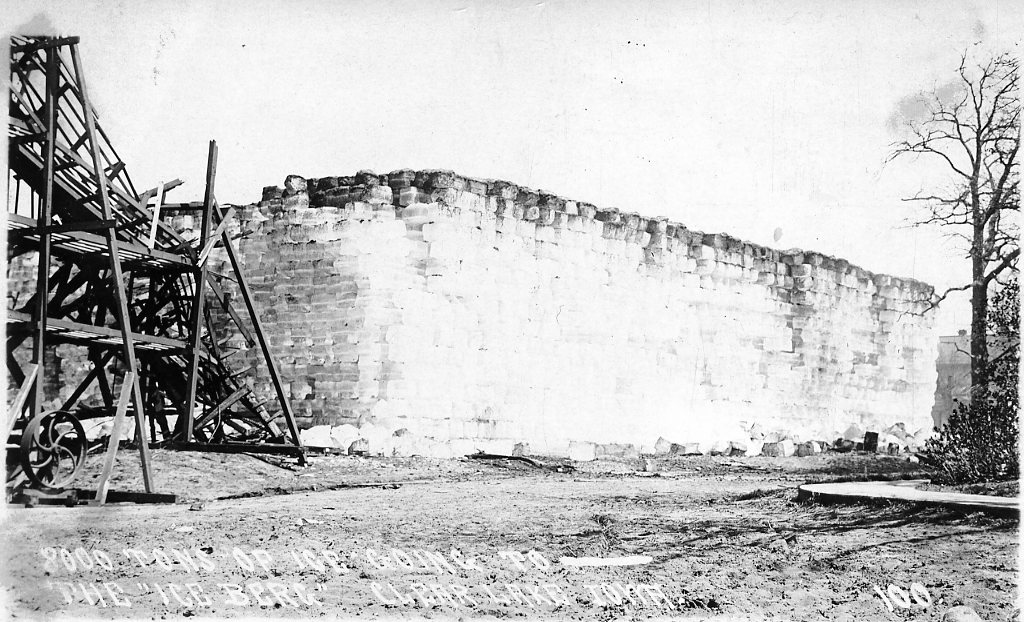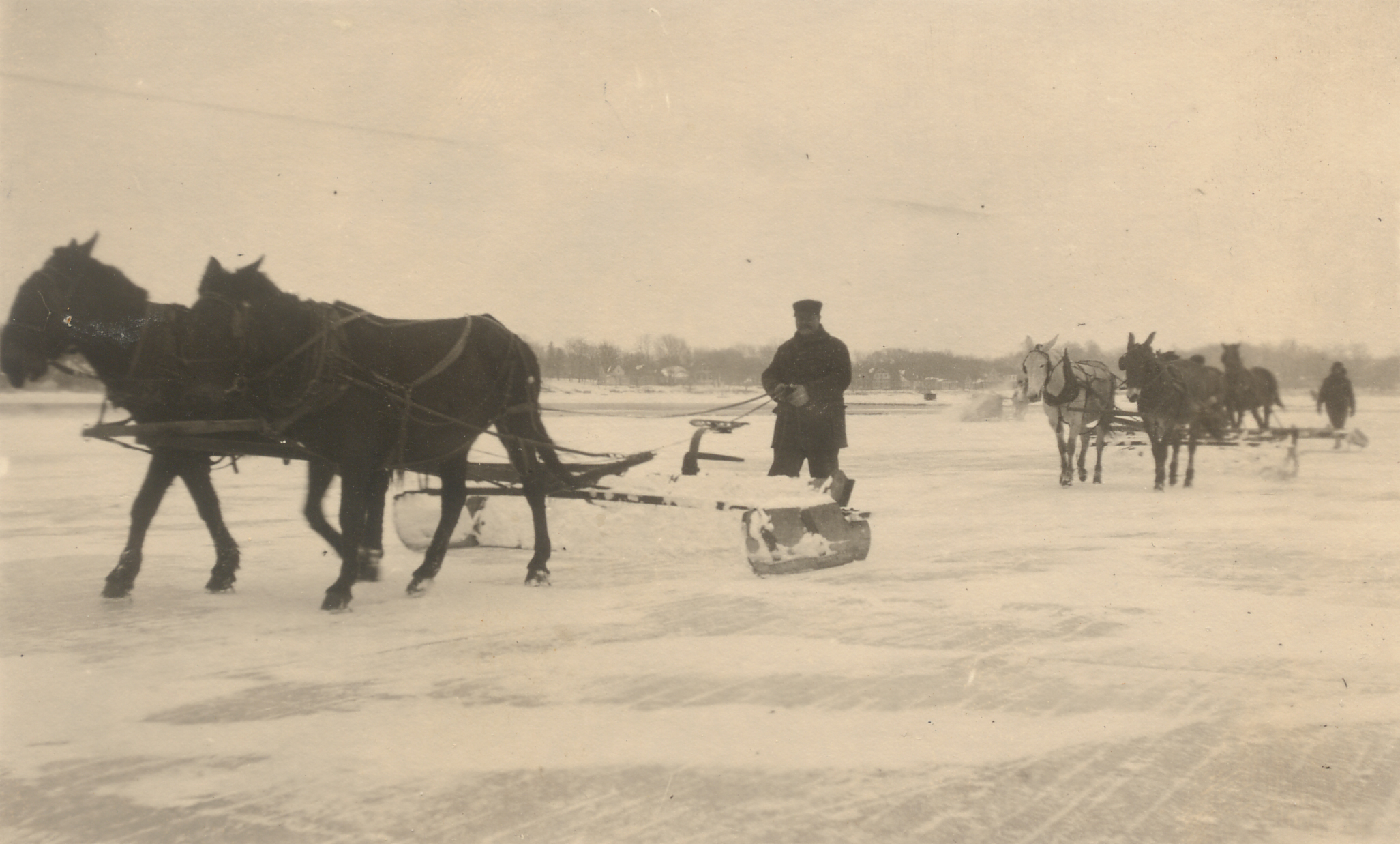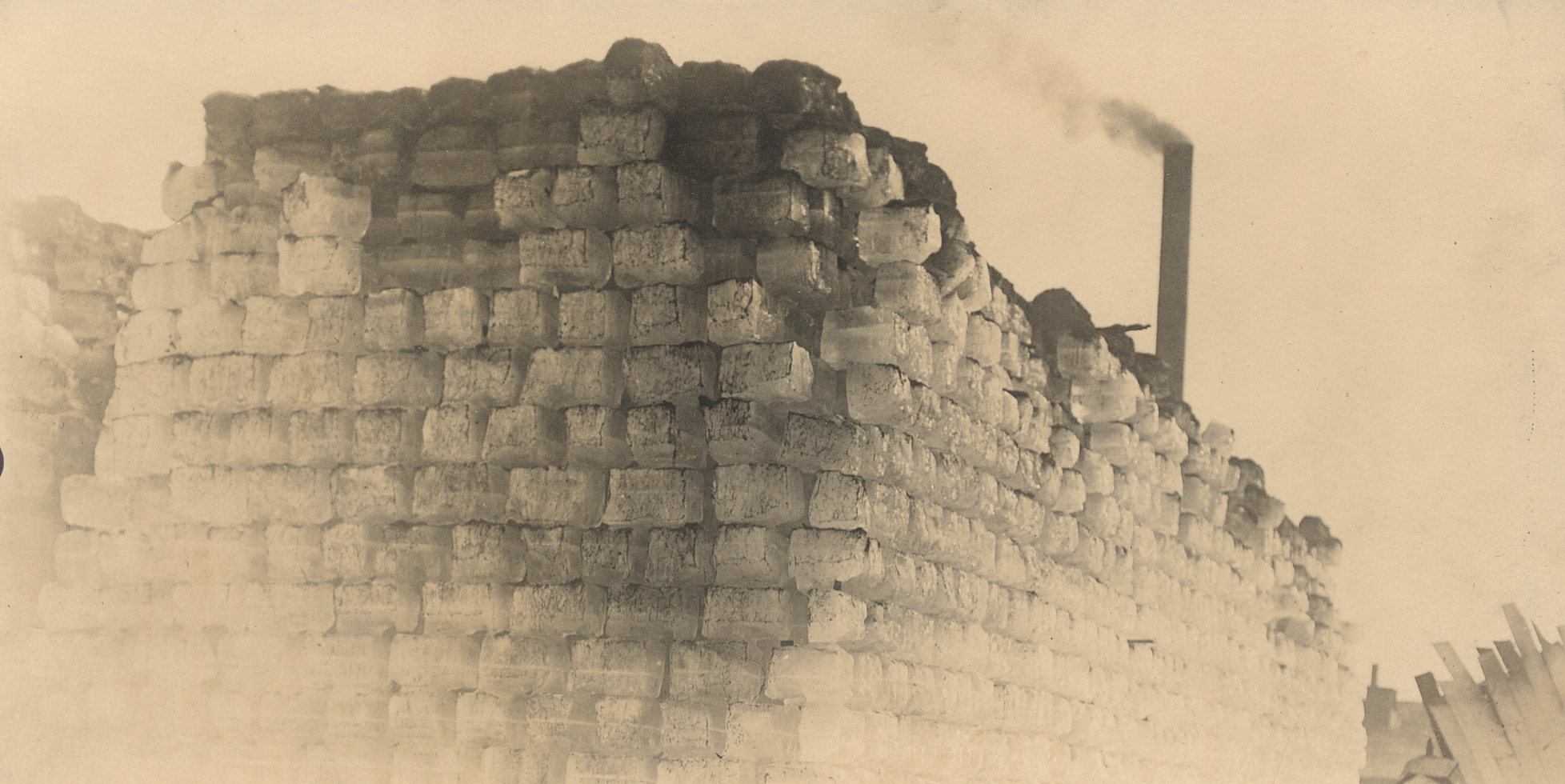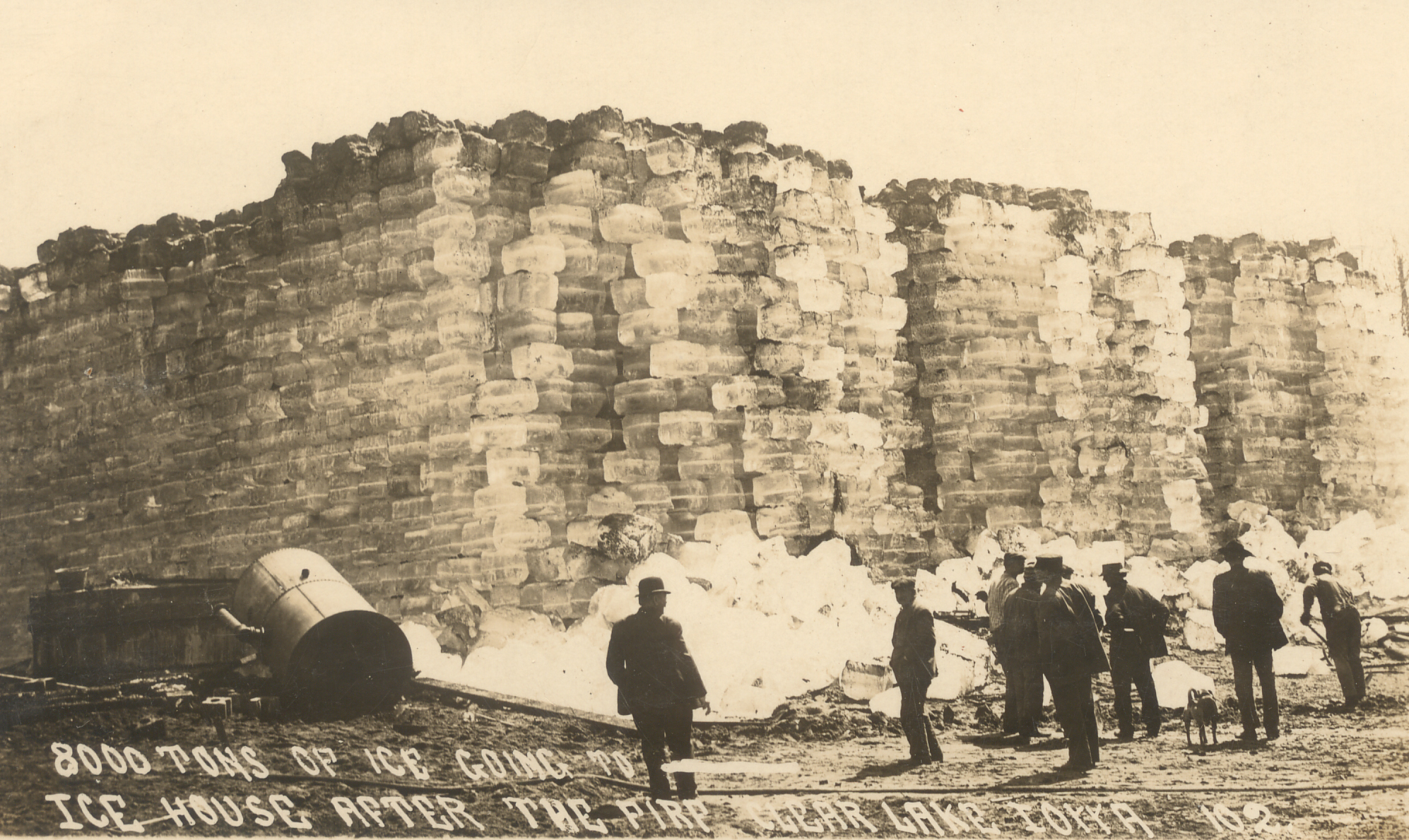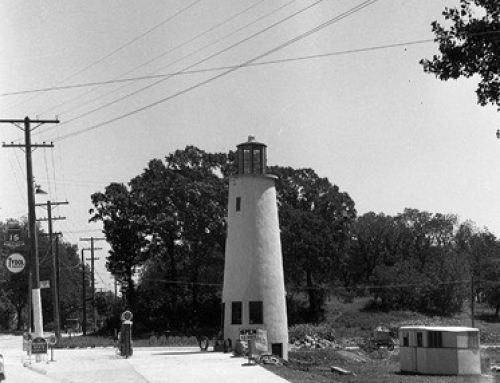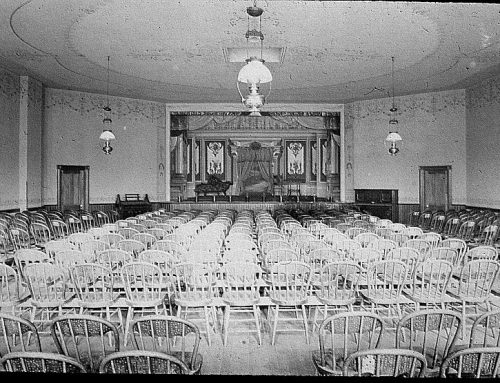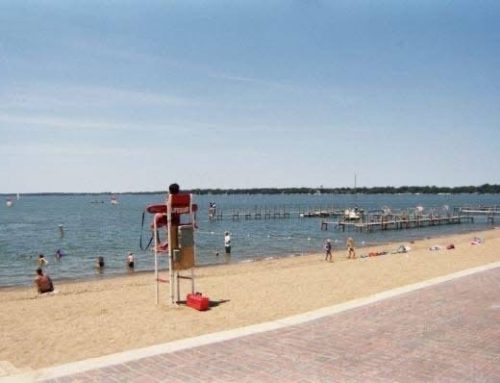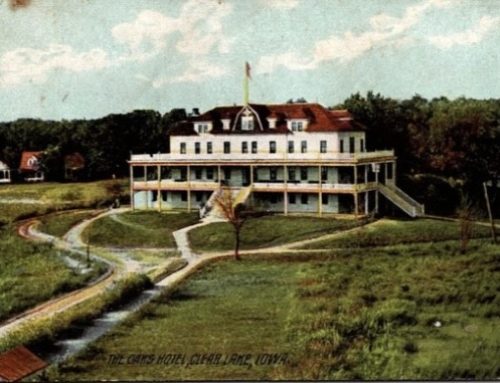Holiday parties are filled with joyful sounds. The effervescence of carbonated drinks hitting the ice signals refreshment. We push the lever in the fridge door, and magically the glass is full of ice. Some hosts go to the effort of making ice cubes frozen around herbs or molded in cute shapes. We can pick up extra large bags of ice at the store for extra large festivities. This comes in handy when the refrigerator ice maker is broken. Again.
Not too many years ago, ice was not as readily available and definitely not as effortlessly had. An enormous amount of manpower was expended in the making of ice. People recognized the value of winter ice as soon as they arrived in Clear Lake. Even early on, they looked for methods to get as much ice as possible. In 1878 the current seawall was the site of railroad tracks laid to make moving the huge ice chunks by train more efficient. The horses and hand saws gave way to gas powered saws. With each improvement the size and scope of the harvest increased to fill demand. Eventually electric saws and machinery enabled the ice total to soar. A vibrant business thrived.
An ice season lasted about 7-14 days in December and January, depending on weather. The brutally hard work paid around 25 cents an hour and employed 75-100 men. Families struggling to get through an Iowa winter welcomed the pay when other jobs were scarce.
The channel that was cut into the ice as a canal to move the harvested ice had to be tended day and night. Men and horses drug rafts constantly to keep it open and the loading docks free from heaving ice. Workers using long metal poles guided enormous ice chunks cut from the frozen lake down the channel to the waiting elevator. Much like square hay bales, the chunks rode up to be transferred to the conveyor belt. The belt ended beside the train cars that then distributed the cargo to ice storage houses. Clear Lake ice was known as the best for clarity and taste!
In 1942 over 14,600 tons of ice were harvested from Clear Lake. The product was expected to last a long time. Housewives ordered blocks for their wooden refrigerators, emptying the drip pan of melting ice regularly until the next delivery. Train cars lined with ice carried perishables like meat to far away places. Restaurants and bars needed ice to function and survive. Ice failures had long ranging consequences.
The ice storage houses in Clear Lake were destroyed by fire not once, but twice. In 1912 the fire left 8,000 tons of ice bare and steaming in the open air. Another fire in 1933 left even more ice melting into puddles.
In July of 1942, a storage shed collapsed under the weight of melting and shifting ice. It’s hard to say if that incident was the slippery end to our traditional ice businesses. Perhaps it was simply progress and modern refrigeration gaining popularity. We now celebrate Color the Wind in February in the ice fields.
So, here’s to the tinkling of ice in glasses- making our holidays merrier. Give a toast to modern comforts and easy ice. Come on over to the Clear Lake Public Library and explore ice past and present. The History Room has historic videos of the ice harvests to share along with photos and fun facts. The kids can get into the learning too with several books. One in particular is titled “Ice- An Amazing History of the Ice Business”. We also have books to teach you how to fix that darn ice maker in the fridge yourself. We look forward to seeing you in this season of frozen lakes and winter pastimes.

